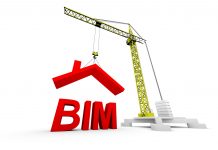John Eynon, Joint Chair of BIM Regions UK and the BIM Regions South East details the significance of adopting BIM Level 2 urging non-adopters to see the window of opportunity it provides…
“Today is BIM Mandate Day!” So said some news releases a few weeks ago on the 4th April. With great timing, I was delivering a BIM Level 2 course for Digital Node and BSI in Birmingham on the same day.
Back in 2011, the then newly published Government Construction Strategy said this:
“2.32 Government will require fully collaborative BIM level 2 (with all project and asset information, documentation and data being electronic) as a minimum by 2016. The staged plan will be published with mandated milestones showing measurable progress at the end of each year.”
From that time on, many working groups, including the Regional Hubs (now the BIM Regions), BIM4 groups, standards, reports, and an abundance of milestones have occurred, not to forget the constant stream of conferences, seminars, webinars, and publications with BIM as the theme.
I guess the question is; does this have any significance for our industry, the built environment and to get personal – you and me? What does this mean to your business, your team, and your project?
Not surprisingly the answer has to be yes. This is critically important and it is intensely significant for us all, but not only for the reasons you might think.
“The mandate” from the Construction Strategy 2011 has kept BIM on the industry agenda at a time when we’ve been climbing out of the worst recession in living memory. However, the mandate only applies to the public sector – currently 40% of UK construction spend. The hope was that this would provide sufficient pull to drag the private sector along the same path, and to some extent this approach has been successful with several leading developers and institutions committing to the use of BIM on their projects and portfolios.
So the mandate has driven change but doesn’t apply necessarily to the private sector and some use this as an excuse not to do BIM at all.
Another reason for the significance of BIM might be the benefits it realises for everyone involved in the project process at whatever stage. This might mean reduction of risk and waste, increased profitability and efficiency, with resulting productivity and quality gains, and great efficiencies in operations and lifecycle management. Certainly, from a UK government perspective, it is for these gains in operational management that the BIM programme exists. Even these of themselves are good reasons or drivers, but they aren’t overwhelming. They make good sense. Close, but no cigar.
To find an overwhelming argument for the adoption of BIM, for digital ways of working and processes, we need to look elsewhere – and that is outside the industry. Let’s just try society in general.
Our whole lives are migrating into the digital world. We use bankcards, Internet, email, text, messaging, phones, social media. For each of us now, there is a huge digital footprint already out there. The Internet of Things and the Internet of Everything means that all around us, buildings, machines and devices exchange data. Smart buildings and cities will only accelerate this trend. More and more, the data about us, our lives and environment, will end up in the Cloud. This in turn creates the pull for data from everything, which includes data from a digitised built environment. This can only be achieved by our industry using BIM, digital construction and associated technologies and ways of working.
Within a relatively short period, a few years perhaps, whatever your role or business, wherever you are in the food chain in the built environment industry, you will need to be able to use and manipulate digital information to transact business. And then very soon it will be no data = no business, and consequently, financial oblivion.
So we can see whichever driver you want to choose – the mandate, benefits, or the digitisation of society – they are all moving in one and the same direction. This is a one-way street, one direction, no going back.
In a digital industry, it will be those that have responded and adapted that will be successful. Many have already begun that transition whilst many haven’t. Some are already seeing the benefits in increased productivity and profitability.
It is not too late to start the journey, yet! There is a window of opportunity but it is closing. If you haven’t begun your journey to Level 2 BIM then now is the time. What are you going to do? What are you waiting for? ■
. . . . . . . . . . . . . . . . . . . . . . . . . . . . . . . . . . . . . . . . . . . . . . .
John Eynon
Joint Chair of BIM Regions UK and the BIM Regions South East
Tel: 07702 126 362









